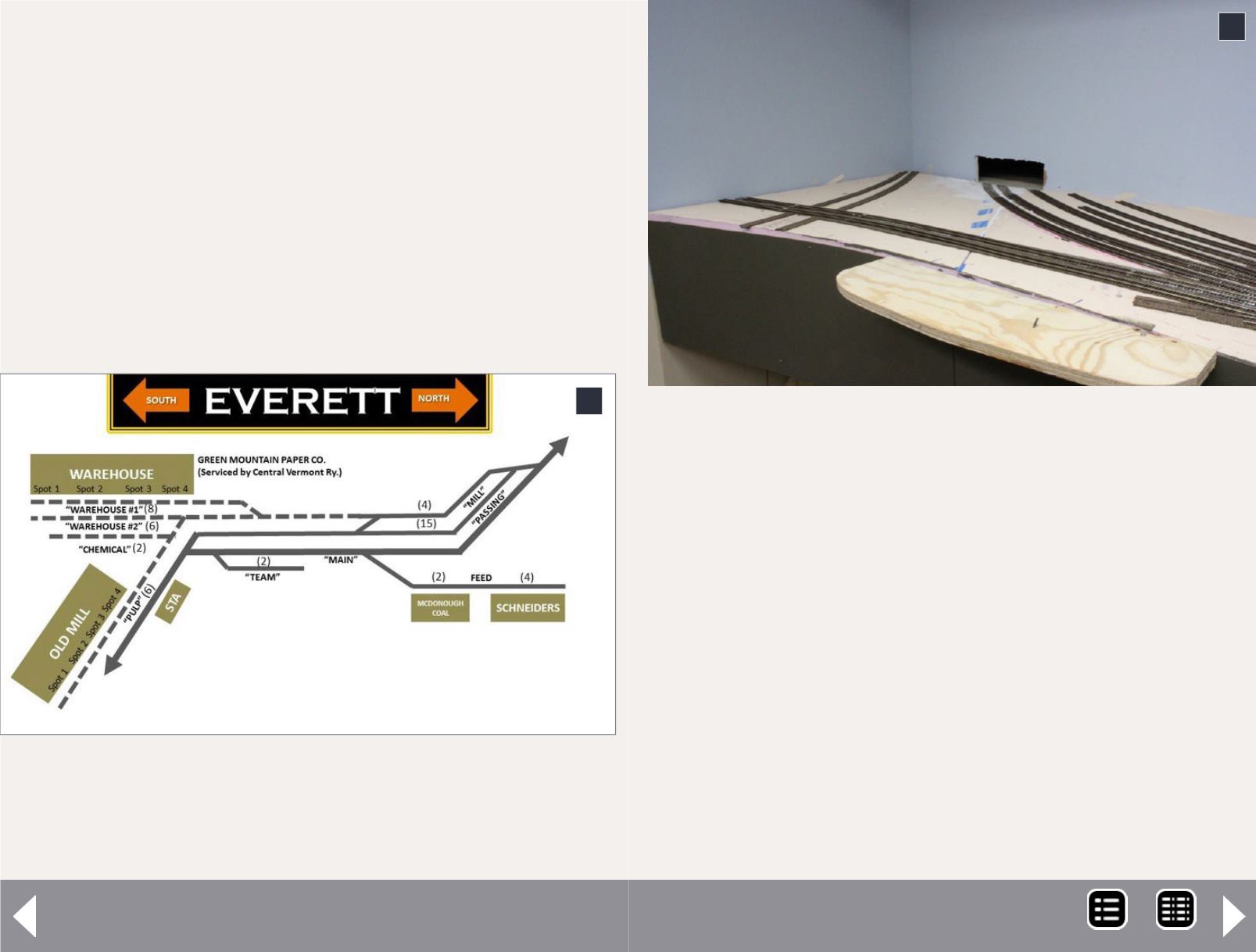
In brief, it accomplished the primary mission of showing the
layout was operable and ready for me to move forward with
all the “fun stuff.” In fact, mechanically the railroad performed
very well, with only one or two minor glitches. There’s a turn-
out in White River Junction that had some occasional issues,
and we located some feeders that I missed here and there. The
biggest issue was a track in the north-end staging yard that
suddenly lost power about halfway through the session. I sus-
pect it must be a loose connection, but haven’t gone under the
layout to confirm that.
The biggest problem wasn’t mechanical or electrical; it was
with the operating scheme. More specifically, it was the
Getting Real Column - 6
4. Each town has a track diagram like this one. Since
many of the industries aren't actually present on the
modeled railroad yet, these diagrams were critical in
answering the "Where does this car go?" questions.
4
paperwork. In a completely bone-headed move, I prepared
a timetable that didn’t have the correct times for the layout!
Instead, it had some prototype times, and some “layout” times
intermixed. This is apparently an issue when trying to run a
timetable and train order railroad. I didn’t have train regis-
ter sheets. I found I need to tweak the waybills a little before
the next session. But hey, I ran out of time. All these were the
result of making last minute “tweaks” to the paperwork.
Another goal was to determine the “ideal” crew size. I started
with eight plus myself. We ended up with seven. Despite the
issues with the paperwork, the crew had a good time, and
5. The hole in the wall marks the point where the visible
mainline enters the staging yard at the south end of the
railroad. This was the last major tracklaying task com-
pleted before the test session. I finished the track the
morning of the test session.
5
MRH-Nov 2013


